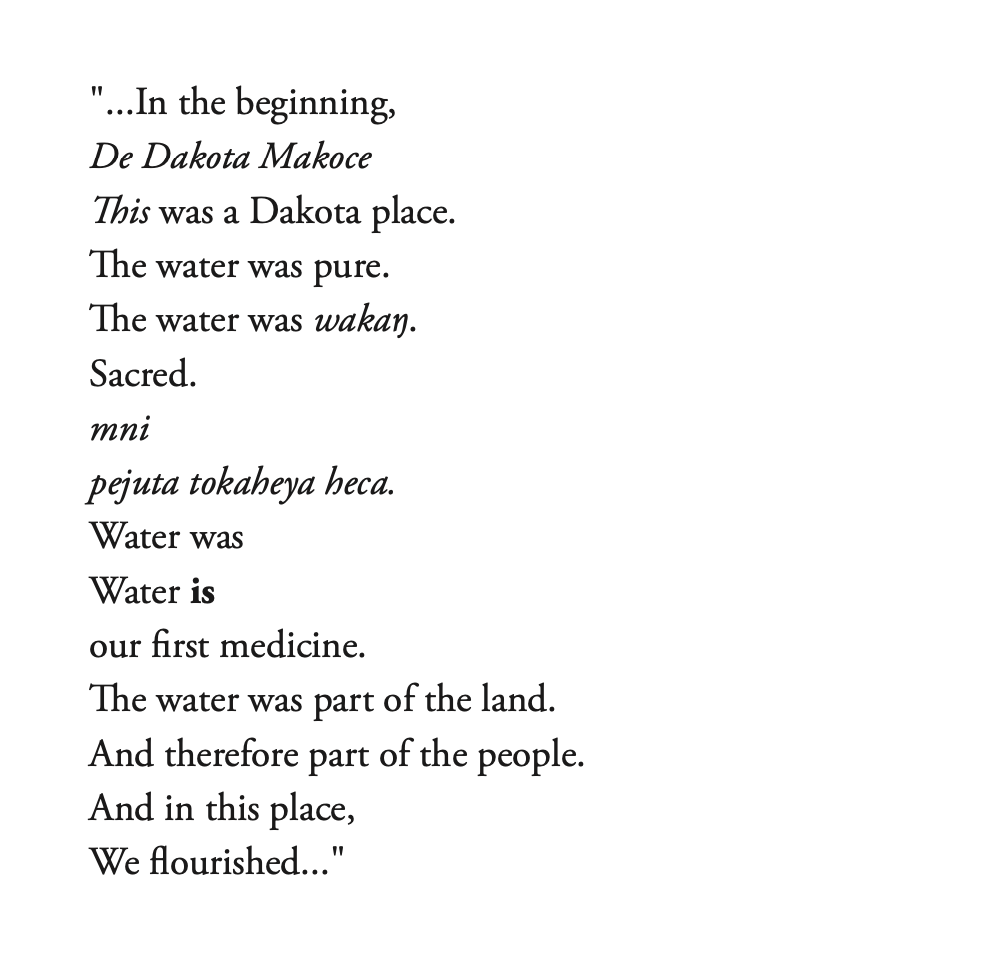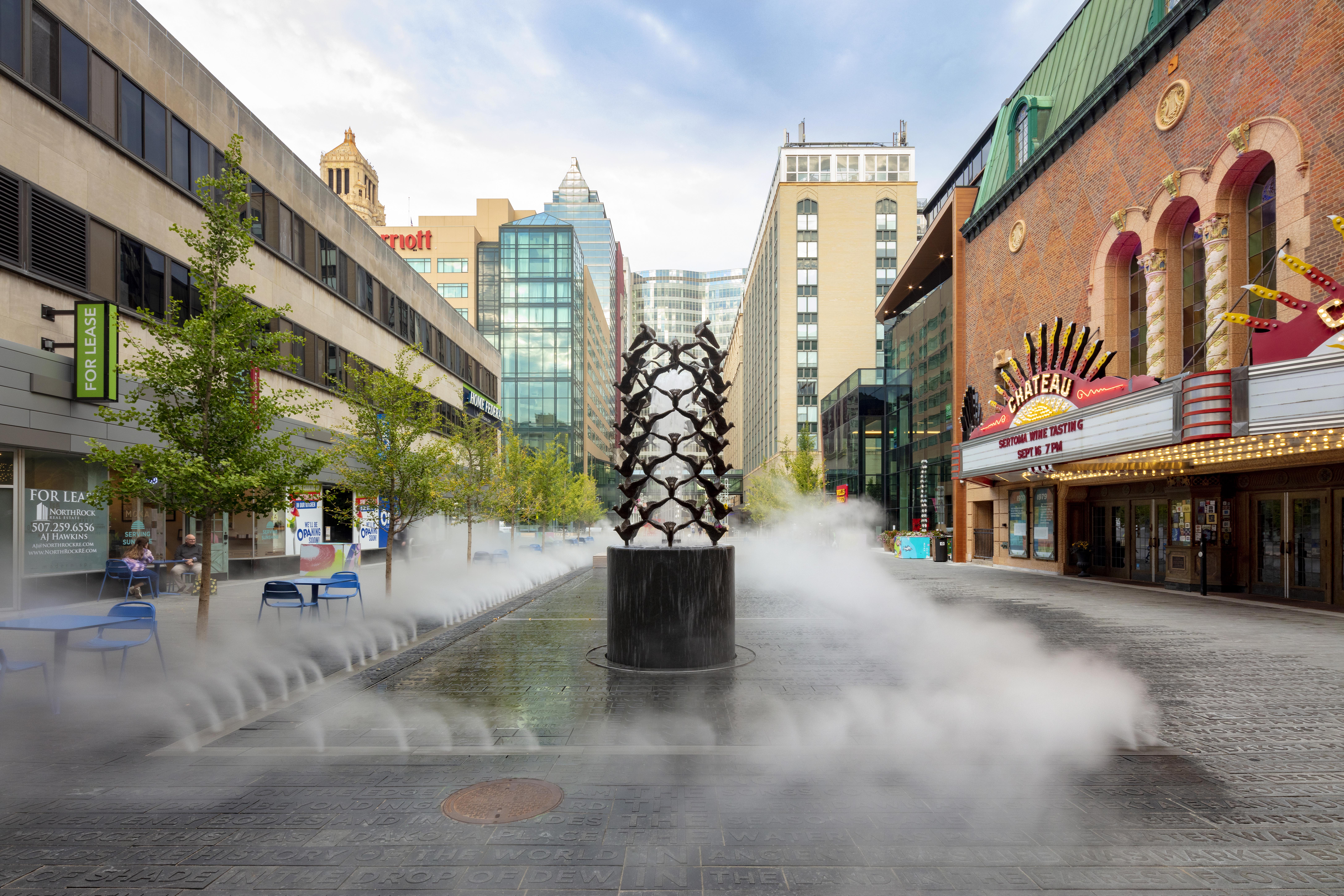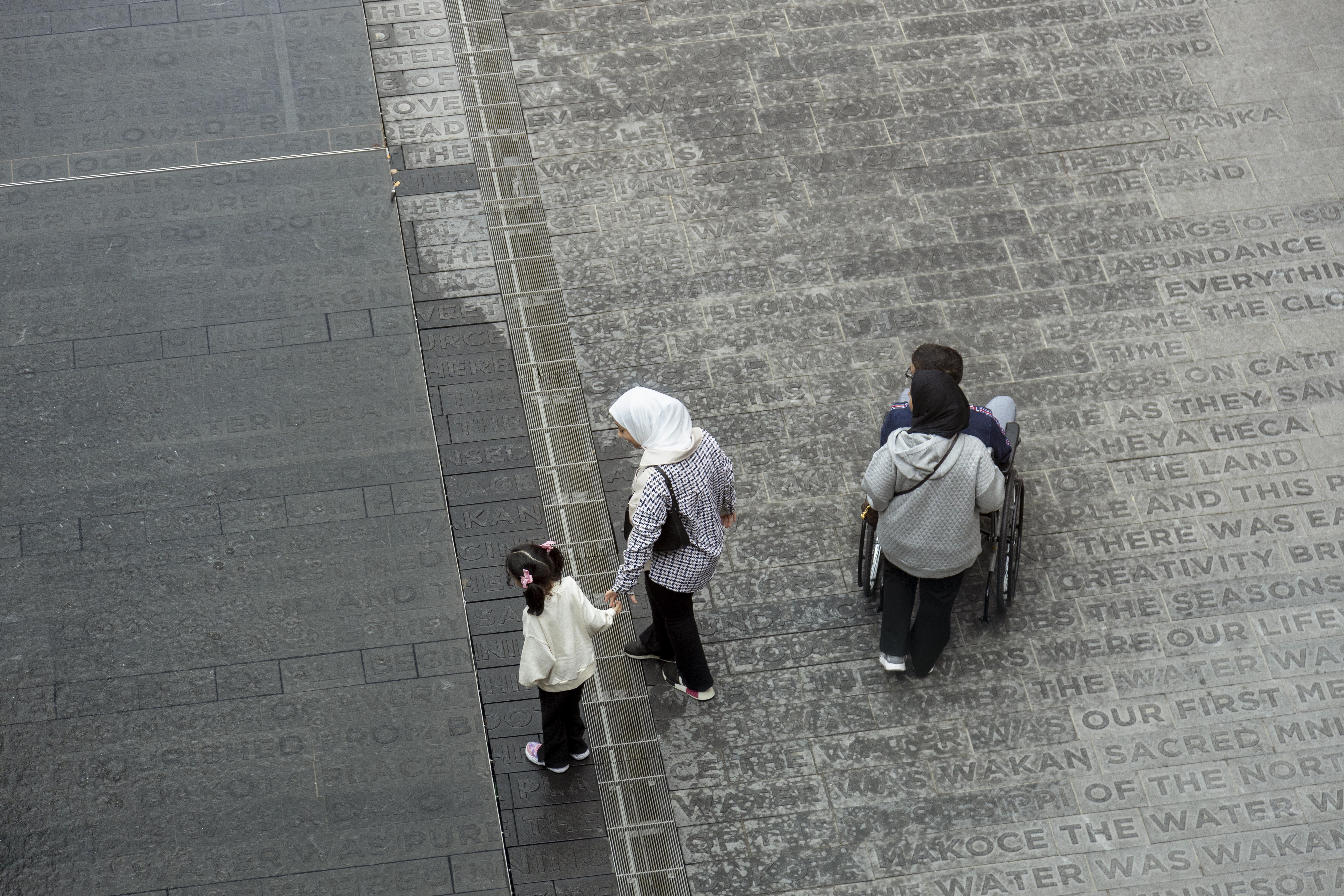Ann Hamilton’s artwork A SONG FOR WATER is a field of language, emerging in relief from sandblasted granite pavers, in downtown Rochester, Minnesota’s central plaza. Stretching over 250 feet, the tactile surface weaves fragments and phrases that evoke concepts of time, geography, history of the land, experiences of place, and the beginnings of human culture. The composition, anchored and organized by a spine of writing by poet and historian Dr. Gwen Westerman, affirms that the Peace Plaza was first a Dakota place and that we are all connected by water, our first medicine. Dr. Westerman is an enrolled member of Sisseton Wahpeton Oyate and is Director of Humanities at Minnesota State University, Mankato. Her poem De Wakpa Taŋka Odowaŋ / Song for the Mississippi River—originally commissioned by the Friends of the Mississippi as part of their The River Inspires event (2018)—is interwoven throughout A SONG FOR WATER, and its words are a part of the many choral refrains one encounters while moving across the public space.The text of the piece does not comprise a single narrative, however, but rather brings narrative fragments into relation, forming a field of phrases in a vocabulary that reflects how the world, the day, and our stories begin and begin again. Origins, headwaters, cycles, and renewal permeate the composition, and the language moves between the otherworldly and the terrestrial, the geologic and the mythologic. A complex web—a weaving—is formed.


While a loom crosses many vertical warp and horizontal weft threads, this composition is organized by a single vertical spine of words excerpted from Westerman’s poem, running west to east through the center of the Peace Plaza. The horizontal lines, formed from the intersection of these spine words with the project’s narrative fragments and the poem’s full length, weave a chorus of repetitions and crossings. The entire field is set in Gotham, a sans-serif typeface known for its geometric form and legibility. The granite pavers are fixed in place, set like a bed of letterpress type; however, the structure of the Plaza is designed to bring those fixed words to life in dynamic and unexpected ways. The scrim pool in Peace Plaza periodically fills with water, flowing in and around the raised letterforms along unique pathways that are responsive to the environment and site conditions. As the water fills, it will first outline the relief letters, then slowly cover, eclipse, and bury them under its reflective surface. Words will slowly return to legibility as the pool drains, and the patterns of evaporation sketch constellations made by the interaction of sun, shade, and temperature. While the text is oriented to pedestrians moving west to east across its surface, the complexity of the com- position is made and re-made, configured and reconfigured, with each crossing. The path one takes becomes the narrative one experiences. Navigation becomes an act of composition, as words link at the pace of one’s movement across its surface. If the first few lines of the piece (In the beginning / De Dakota Makoce / This was a Dakota Place...) are the headwaters and the central spine of text is the main river channel, then all the meandering paths one can take through the piece become narrative tributaries, smaller veins in a much larger complex network. Every step on and through A SONG FOR WATER is a point of connection, from now to then, one to many, memory to mythology, environment to culture. In all those layers of knowledges and connections, water is a constant, part of the land and therefore part of the people.



De Wakpa Taŋka Odowaŋ / Song for the Mississippi River (2018)
by Gwen Westerman
The scrim pool in Peace Plaza periodically fills with water, flowing in and around the raised letterforms along unique pathways that are responsive to the environment and site conditions. As the water fills, it will first outline the relief letters, then slowly cover, eclipse, and bury them under its reflective surface. Words will slowly return to legibility as the pool drains and the patterns of evaporation sketch constellations made by the interaction of sun, shade, and temperature.

